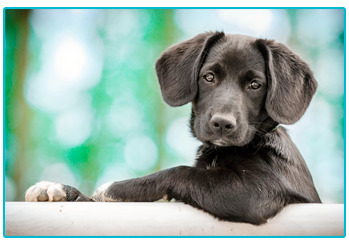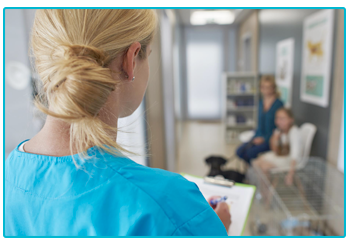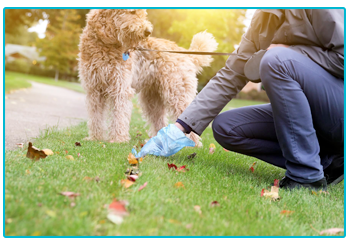As spring is almost upon us, you might be heading out on more adventures with your dog in order to make the most of the lighter nights and warmer temperatures. As you enjoy these magical times getting sociable with your pet pooch, it could also be important to keep an eye out for the signs of illness. Parvovirus is a virus that could be deadly for your doggy. At The Insurance Emporium, we want your pet to live a healthy life, so we asked our pet health expert for some advice on spotting the signs of parvovirus.

What is it?
Parvovirus is a highly contagious virus that causes acute gastrointestinal illness in dogs. The condition could potentially be life-threatening and there is a high mortality rate if left untreated. The virus causes significant damage to the lining of the gut and can also affect their bone marrow and immune system. Further to these symptoms, parvovirus could also cause damage to the muscles in the heart of unborn or very young puppies. Young dogs, particularly those under six months old, are most at risk of parvovirus so seeking out treatment and vaccination for them could be vital.
How does it spread?
The virus can survive in the environment for long periods of time and has been known to persist indoors for up to two months and outdoors for even longer. Dogs become infected after being exposed to the virus through a variety of different mediums. The most common ways could be direct faecal spread through the mouth or nose, or from contaminated objects. Infected dogs will often show signs of the virus within four to five days of their exposure. Some of the common clinical signs include anorexia, fever, vomiting and foul-smelling watery diarrhoea. If you do suspect that your pooch has contracted the illness then it could be vital to seek immediate veterinary treatment. Although there is no known cure for parvovirus, supportive care could be provided by a vet and give your doggy the best chance of recovery.

Getting vaccinated
During the first six weeks of their life, puppies have some protection through maternally derived antibodies. These are provided by a vaccinated dam within the mother’s colostrum after birth. Due to the severity of the condition, it could be essential to ensure that your dog receives vaccination for parvovirus. The vaccination procedure is started when a puppy is six to eight weeks old, this is then followed by a second vaccine two to four weeks after that. Following on from this initial vaccination, it will usually be administered every one to three years. As always, we’d recommend asking your vet for their advice on the best way to approach vaccination for your beloved pup.

How to reduce the risk
The virus is resistant to many commonly used detergents and disinfectants but there are things that you could do to try and help reduce the risk. Following good hygiene measures in the home might always be a good starting point. As faecal matter is such a big risk in the spread of parvovirus, it could also be important to ensure that you always pick up your dog’s stools when at home or walking in public areas. Similarly, trying to prevent your dog from coming into contact with other dog’s faeces could make a big difference in avoiding the illness. Remember not to walk your unvaccinated puppy in public areas until they have completed their vaccination course. Similarly, it could be important to keep them away from other dogs until then too!
If you’ve just picked up a new puppy and want to start your adventures in the big, wide world then it could be vitally important to go and see your vet to start their vaccinations. Parvovirus can be dangerous to canines but ensuring that your pet is properly vaccinated could mean that you can have many magical escapades with less worry!
All content provided on this blog is for informational purposes only. We make no representations as to the accuracy or completeness of any information on this site or found by following any link on this site. We will not be liable for any errors or omissions in this information nor for the availability of this information. We will not be liable for any loss, injury or damage arising from the display or use of this information. This policy is subject to change at any time.


